#multi vendor script
Explore tagged Tumblr posts
Text
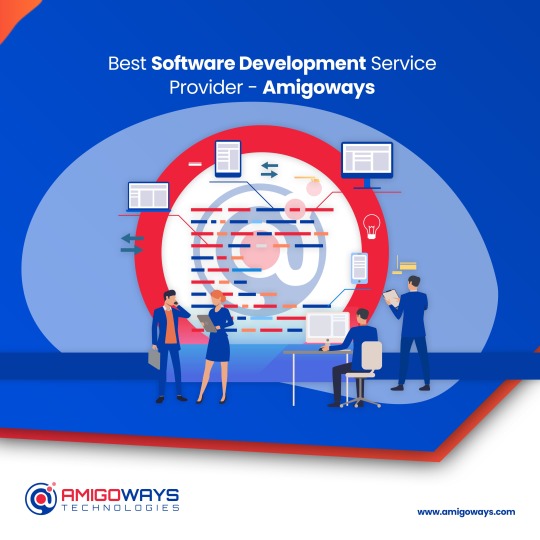
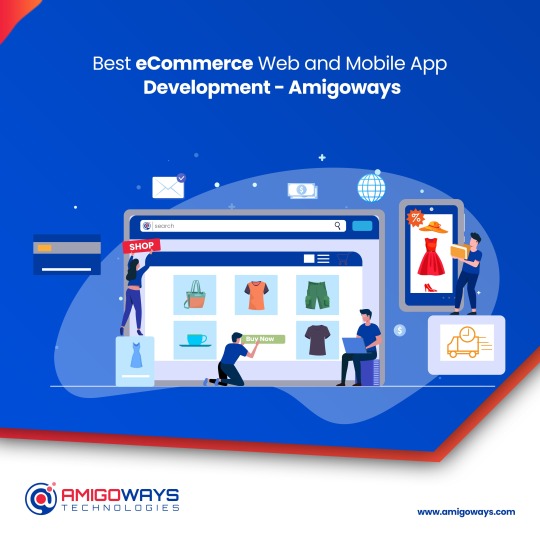
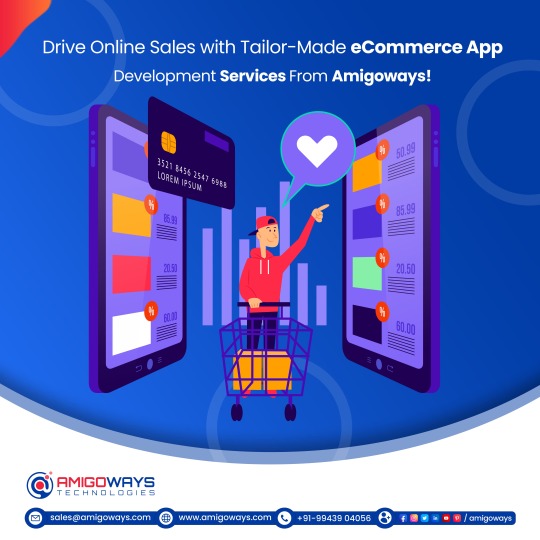
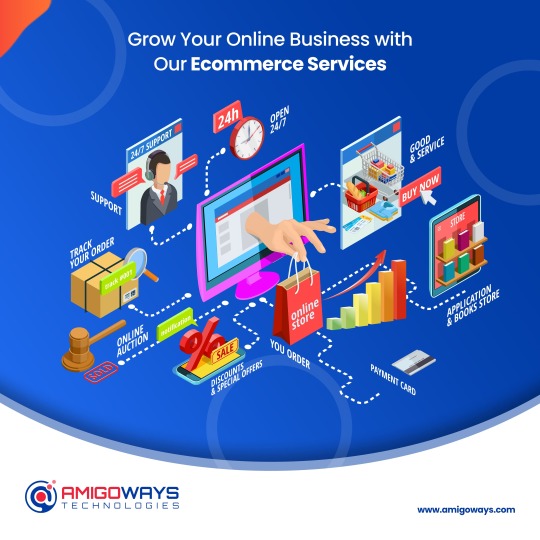
Top eCommerce Development In Tamil Nadu
Amigoways is one of the most trusted eCommerce development company in Madurai, We offer effective and successful eCommerce website & extension development for all types of B2B & B2C organizations. Amigoways is a team of well-trained, certified tech professionals who structure your venture with a business suite. Our multitude of services for your business upliftment on the business market.
Our eCommerce Development Services
Custom ECommerce Development
API Integration & Customization
Data Maintenance & Migration
ECommerce Audit & Optimisation
ECommerce Data Analytics
ECommerce Consulting
Business Intelligence
To know more about eCommerce development services Tap on - https://www.amigoways.com/ecommerce-development/
#ecommerce website development in madurai#Multi Vendor eCommerce Services in Tamil Nadu#top Multi Vendor eCommerce Services in Tamil Nadu#b2b ecommerce software solutions in madurai#multi vendor clone script madurai
0 notes
Text
Rise and Impact of Multi-Vendor Marketplace Script in eCommerce Business

The development of multi-vendor marketplace script has transformed the eCommerce industry, allowing businesses to build online marketplaces similar to Amazon and eBay. These scripts give a ready-to-use solution for creating a platform where multiple vendors can sell their products, increasing customer options and delivering a greater selection.
Key Factors Driving the Usage of Multi-Vendor Marketplace Script:
Reduced Development Costs: Custom development is not necessary with multi-vendor marketplace scripts, which saves both time and money.
Quick Setup and Launch: These scripts provide a ready-to-use solution, allowing for the quick deployment of a working marketplace.
Scalability and Flexibility: Multi-vendor marketplace scripts are built to scale and can be tailored to meet specific business requirements.
Feature-Rich Functionality: They include essential features for managing vendors, products, orders, payments, and promotion.
Impact of Multi-Vendor Marketplace Script on eCommerce Businesses:
Increased Product Variety: By bringing together multiple sellers, multi-vendor marketplaces provide a varied choice of items to a larger client base.
Increased Visibility and Reach: Vendors receive exposure to a larger audience, boosting their chances of connecting with potential buyers.
Simplified Marketplace management: The eCommerce Scripts reduce operational complexity by simplifying the handling of vendors, items, orders, and payments.
Expanded income Opportunities: Marketplace owners can earn money through a variety of models, including commission fees, subscription fees, and advertising revenue.
Less Competition: Multi-vendor marketplaces can level the playing field for small sellers, allowing them to compete with bigger shops.
Improved Customer Experience: Customers can choose from a larger variety, compare prices, and have a more convenient buying experience.
Benefits for eCommerce Entrepreneurs
Better Scalability
Scalability is an unresolved problem for eCommerce companies. Multi-Vendor Marketplace Script provides a scalable platform, allowing entrepreneurs to grow their businesses without having to completely revamp their infrastructure. This adaptability is essential in meeting market demands and accommodating corporate expansion.
Efficient resource Utilization
Resource optimization plays an essential role in long-term business strategies. Multi-Vendor Marketplace Scripts help businesses run more efficiently by centralizing essential processes, minimizing redundancies, and assuring effective resource allocation. This results in cost savings and a more flexible business approach.
Competitive Advantage in a Variety of Markets
In an era where businesses are no longer restricted by geographical boundaries, having an online presence is necessary. Multi-Vendor Marketplace Scripts enable businesses to enter new markets, giving them a competitive advantage by accessing a larger audience and diversifying income sources.
Both individuals and businesses can build their online eCommerce store with the Multi vendor eCommerce Script. As the business expands, these scripts will play an increasingly larger role in moulding the future of online buying.
Are you ready to take your eCommerce business to the new heights? Explore the possibilities provided by Multi-Vendor Marketplace Scripts. Accept the future of online shopping and set up your business for long-term success.
Reach out to us for professional guidance and implementation.
Contact our team for knowledgeable assistance and smooth Multi-Vendor Marketplace Scripts setting up. Our team of experts are standing by to help you maximize the potential of your eCommerce business. With Sangvish unique solutions, you can stay ahead of the curve and lead in the digital economy.
0 notes
Text
Advantages of a Multi-Vendor Marketplace | Laravel E-commerce
In the realm of eCommerce, the concept of a multi-vendor marketplace stands as a beacon of opportunity, offering an all-in-one shopping experience where a diverse array of products and services converge under a single digital roof. These marketplaces, exemplified by industry giants like Amazon and Flipkart, open wide avenues for various sellers to showcase their offerings, effectively expanding their reach and boosting their revenue streams.
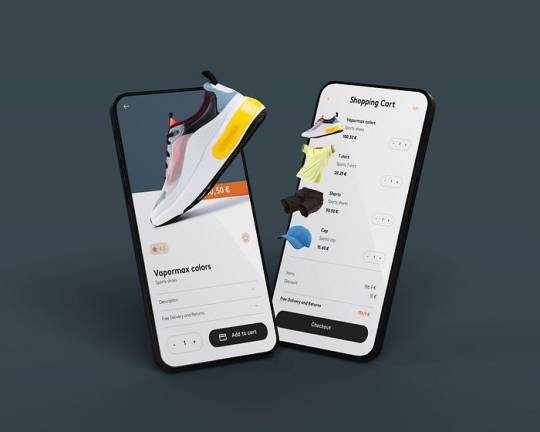
Understanding the Multi-Vendor Marketplace Business Model
At first glance, the concept of establishing a multi-vendor marketplace might appear complex. However, it’s far more manageable than it seems. The fundamental goal of vendors and merchants within such a platform is simple: to drive sales. Each participant plays a unique role in achieving this goal.
Vendors take charge of vital aspects such as sales management, order processing, product listings, inventory management, and shipping logistics. Meanwhile, service providers focus on devising innovative strategies to bolster brand recognition and drive revenue growth.
The operation of a multi-vendor marketplace involves several critical steps, whether you intend to launch a specialized fashion boutique, a designer jewelry hub, or an all-encompassing marketplace akin to Flipkart or Snapdeal. Vendors can easily register on the platform, manage their product catalogs, oversee purchases, and maintain control over their operations through a unified dashboard.
When customers place orders, transactions are seamlessly facilitated through the platform, with merchants collecting a nominal commission fee for each successful sale. Vendors also shoulder the responsibility of addressing customer inquiries and resolving any complaints, as well as handling packaging and shipping processes.
The Rising Demand for Multi-Vendor Marketplaces
In contrast to single-vendor stores that exclusively offer their own products, multi-vendor marketplaces present a treasure trove of choices from various brands and product categories, meeting the diverse needs of customers all in one place. This inherent versatility makes multi-vendor marketplaces an enticing prospect for entrepreneurs looking to capitalize on the retail landscape.
Embarking on Your Multi-Vendor Marketplace Journey
But how can you start your very own multi-vendor marketplace? The answer lies in your approach. You can embark on this venture either from scratch or with the assistance of marketplace software.
Developing a multi-vendor platform from scratch demands substantial investments in terms of both time and financial resources. It necessitates the expertise of a skilled design and development team. However, this custom approach offers unparalleled flexibility.
Alternatively, you can opt for ready-made marketplace software, which provides a cost-effective and time-efficient solution. These platforms streamline the development process, enabling you to launch your marketplace more swiftly and with reduced expenses.

Benefits of Embracing the Multi-Vendor Marketplace Model
The multi-vendor marketplace model offers a multitude of benefits to sellers, marketplace owners, and consumers alike:
Sellers can rapidly expand their customer base on a global scale.
Vendors save on the costs and efforts associated with developing standalone applications, simply by signing up and listing their products.
Real-time inventory tracking and order management capabilities ensure timely order fulfillment and inventory control.
Marketplace owners can amass a broad clientele thanks to the extensive product range offered on their platform.
Owners can focus on enhancing vendor visibility, unburdened by the day-to-day operations of individual vendor shops.
The multi-vendor marketplace model provides diverse revenue streams, offering owners the potential for substantial earnings from a single platform.
Leveraging Laravel Ecommerce for Success
For those seeking a reliable software solution to build a promising multi-vendor marketplace, Laravel ecommerce emerges as an excellent choice. This comprehensive package boasts an array of features, including support for multiple payment gateways, advanced search functionality, robust store management tools, responsive customer support, multilingual options, and much more.
In conclusion, there has never been a better time for entrepreneurs to invest in the lucrative world of multi-vendor marketplaces. These platforms offer a gateway to multiple revenue channels and the potential for substantial profits in the dynamic eCommerce landscape.
#ecommerce#ecommerce clone scripts#laravel ecommerce store#laravel ecommerce system#laravel multivendor ecommerce#multi vendor laravel ecommerce#laravel ecommerce software#laravel ecommerce#laravel rental system#Ecommerce software#ecommerce marketplace software
0 notes
Text
I Became the Villainess of a Third-Rate Drama

Okay I've been putting off talking about this manhwa because it is so hard for me to put into words just how hilarious and fun and weirdly resonating this one is. But I need someone to enjoy this ride with me so - here we go.
Yoon Miso is a writer. To be more specific, Yoon Miso is a script writer for Kdramas. After years of working her butt off working under a boss that writes the most cliche and over-the-top dramatic stories, Miso has finally promoted her own script, a drama about a hard working, independent, multi-layered female lead that wins the day by turning tropes on their head. It's even been picked up by her network and casting for the leads has already begun.
Here's the problem. Well, the first problem.

Miso's boss stole the script and rewrote it before presenting it to the broadcasting company. That's not the big problem though. The big problem

The big problem is that, thanks to a smart watch given to her by a departing mentor, Miso has woken up inside the story - and its her boss's version of the story.
The super big problem is that Miso is the chaebol villainess of said story - and villainesses tend to die at the end of her boss's stories.
When the female lead accidentally spills soup on Miso at the restaurant she's eating at, the theme song to close out the first episode of the drama start playing violently in the background and her smart watch prompts her to 'create the closing for episode one'.
Because that scene - and the music - isn't going to stop until she, the villainess, creates something her boss would think it worthy of the ending of the first episode in a new drama.

The only way out is through and if Miso ever wants to get back to the real world she's going to have to make it all the way to the end of the series. Alive. And that's the set-up for our story. One put-upon writer trying to navigate her way through the over the top drama mess her boss made of her script. She's going to rewrite the script if it - or it will kill her. It's not that easy to change a kdrama's rules but darned if Miso isn't going to try. Fighting!
First off, let me introduce you to my favorite character.

This is Mr. Cha. I'm not exaggerating when I tell you I literally say 'Mr. Cha!' in the most delighted voice every time this guy shows up. Mr. Cha is the villainess's secretary and as such he's stunningly competent. This man is Miso's right hand man and he's awesome. I don't care about the male lead - I don't even remember his name - but I LOVE Mr. Cha! He and the 'villainess' work so well together its a delight to watch. Weird kdrama situations? Mr. Cha doesn't bat an eye. Miso making a mess of things? He'll bring the broom. At some point, Miso even begins to suspect he's meant to be the secondary male lead - who we all know is the much more interesting of the two male leads in any kdrama. Miso and Mr. Cha are my power team and I am here for them. Miso is Team Cha all the way and I completely understand why.

Unfortunately for Miso - there's a review committee that pops up to put a lid on things whenever life tries to go beyond a very gentle PG13 rating. (she's had to be called before the review committee a couple of times now regarding Mr. Cha).
You also have the very conflicted male lead of the story and the spunky part-timer female lead

Miso's parents that are now super rich CEOs instead of the owners of a struggling mom and pop diner. Even the neighborhood fish vendor is there - and what's the story with him and Miso's mom?! (stay tuned until next week).
Okay, the reason I'm enjoying this webtoon so much is the tongue in cheek approach its taking. It KNOWS how crazy kdramas can be at their worst and it is going to lean, hard, into that. Watching Miso be Just So Done with it - and watching the other characters just immediately jumping to the worst takes on everything is hysterical. This is one of those stories that's just having fun with itself - and yet -
Yeah, I spend a lot of time laughing with this one - but I am also deeply invested in the characters. Every single one of them has a lot more going on with them than it at first appears. I feel bad for the male lead. The female lead IS delightful without being obnoxious. Mr. Cha is going through character refinement. The world feels real enough to be lived in. And the story, thanks to Miso, is taking all kinds of twists and turns that I haven't expected that range from wholesome to tragic to 'oh I love this trope'. This story isn't written from a place of condescension - this manhwa really enjoys kdramas and embracing the crazy of them while still asking - yes, but what if a normal person were in this mess. It's a fun story that pokes fingers at itself - but its also a well written story that's not afraid to actually deal with some of the repercussions of 'the episode ended on drama but what about afterward'. I do want a happy ending for Miso (and Mr. Cha) - but I also want a happy ending for the male and female leads as well.
Plus watching Miso lean into being the villain when she deems it necessary is pure delight and I'm living vicariously. Girl knows how to use a trope just as much as how to try to avoid one and she's not afraid to when its useful.
rating: PG (thanks to that review committee)
warnings: over the top kdrama shenanigans, blood, death, murder, bullying, parental death, kidnapping, over-bearing parents, accidental pregnancy, one room with only one bed, cliches as far as the eye can see
finished: nope YES!!
abs?: chapter 4
Seriously, this is just a fun one that isn't going to put you emotionally through the wringer but will keep you entertained and smiling all the way through

#i became the villainess of a third-rate drama#i became the villainess of a third rate drama#manhwa#webtoon#webcomic#fic rec#manhwa rec#tropes#tropes as far as the eye can see#kdrama#korean drama#manhwa review
17 notes
·
View notes
Text
making a separate post for this so I don't hijack a gifmakers post but

@burntstay u literally have no idea! the entire past 2 years have been insane so excuse my rambling post
1. I went to see Dan last Nov and Dec. I went in November when he came to Seattle and got SO excited to finally meet him after so many years that I stumbled all over the MnG and couldn't respond to his very gentle kind compliments. So I flew to Oakland to see him again 😭 It hurt my bank account but not only did I meet him at that show during the MnG but he talked to me during the show too (interactive comedy show and I said I'd fuck the cinnamon toast crunch mascot bc he's a twink. he booed me but then brought it up several more time 💀)


November and December, respectively. (yeah he did accidentally get that fucking silver marker on my arm 💀)
2. Also in November, I had the opportunity to catch Kurtis Conners set he was doing in Seattle :] I went to the early show in the balcony bc it was what i could afford and Loved it sooo much but couldn't see bc I didn't have glasses at the time and at the end when I was calling my friend to talk about it, someone offered me 3rd row tickets because they had to cancel for a family emergency. I took them, could see the set, and it was just as funny the 2nd time!
the next day I'd taken my friend to Pikes Place (popular indoor/outdoor multi-vendor permanent market in Seattle) and ran into him and Jenna in the comics store!

^ me being so insanely happy but embarrassed bc I was partially non verbal and was trying so hard to communicate with him. (he was so incredibly kind and patient and then I helped him find the script he was looking for 😌 <- I do not work at that store)
now rapid fire! I also got to finally see Cirque! my old boss at the club had an extra ticket and brought me along!! (I have tried to sew Cirque THREE times and circumstances have always gotten in the way. mostly me moving abruptly like a week before the date they were in town)
In April, I got to see Hippocampus (one of my FAVE indie bands idc idc) and the guitarist Nathan gave me a pick! I also got to see Conan Gray again (saw him in 2019 without knowing who he was and got obsessed) and Cavetowns show with Tessa Violet. and Tessa RECOGNIZED ME which would have been insane anyways but I look SO different from the past times I've seen her!! I also saw some smaller bands and they were some of the most lovely kind caring people ever!
and then in June I saw 5SOS for the first time. I've been listening to them since I was a little tumblrina in 2014 and I cried so hard during their show. pure unadulterated nostalgia and joy. it was a really good show too (and that month my BFF who I usually go out to Philly to see once a year was able to come to ME because of a work conference 🥹 and my partner came up for our yearly 1 month together!)
also that month I met a comedian I ADORE!!! I found him by accident on Dry Bar Comedy in maybe 2015? and have watched his stuff on YouTube and followed him on Twitter since and I randomly ran into him in a vintage store in Tacoma??? And of course the first thing my dumb ass said instead of "oh wow it's Shayne Smith!! I'm a huge fan" no... I said "YO it's the guy I showed u that one time when I was drunk!!!" to my sister 😭😭 He luckily is a really dope guy, thought it was very funny, and danced around with me
In October I went to a music festival out east and saw a BUNCH of my favorite bands and King Princess said I looked hot, so highlight of my compliments fr (and saw mitski!) Lorde was coming but her set got massively delayed due to faulty tech and I had to make the last train so I didn't get stranded and did not get to see her.
Also I got matching tattoos with my other bff who I flew to seattle to stay with me for a week 🥹 hi @catholicdaredevil
which circles us back to the November/December stuff I talked about first cuz I got excited
The rest of the winter was just struggling through till I saw the sun again but I DID get to meet a long term internet friend at the convention in Seattle (s/o to @pjsforestkid for so lovingly dealing with my low energy the whole day)
April I saw Noel Miller live!!! June my partner came up and we traipsed around
and then September and October I got to sew 4 hozier shows, was barricade for 3 of them (and have professional photos for all 3 times I was barricade which is INSANE!!!!!), hozier called me out on stage for my shirt, I got posted on his ig, and I met almost the entirety of a friend group I've had since 2019 AND DanandPhilGames returned from the hiatus



it's been an insane almost 2 years I finally feel like my life is sorting itself out and I'm so overjoyed
this is such a long fucking post but your tags just reminded me of all the joy and love I have been experiencing and the love that continues!!! I am so happy :)
6 notes
·
View notes
Text
DevOps with Multi-Cloud – A Career-Defining Skillset for Freshers & Jobseekers
In today’s fast-paced digital era, traditional IT roles are rapidly evolving. Companies aren’t just hiring developers or system administrators anymore—they're looking for multi-talented professionals who can automate processes, manage cloud environments, and speed up delivery.

If you’re a fresher or recent graduate wondering: “What skills should I learn to secure a future-ready tech job?” The answer is simple: DevOps with Multi-Cloud.
Let’s break down why this powerful combo is changing the IT industry—and how you can be a part of it.
What Is DevOps and Why Is It So Important?
DevOps is a methodology that integrates software development with IT operations. It encourages automation, seamless collaboration, and faster software releases through Continuous Integration and Delivery (CI/CD).
Key Concepts in DevOps:
CI/CD (Continuous Integration & Continuous Delivery)
Infrastructure as Code (IaC)
Automation & Monitoring
Containerization (Docker, Kubernetes)
Why Companies Choose DevOps:
Speeds up development and deployment
Reduces errors and downtime
Encourages teamwork between development and operations teams
Understanding Multi-Cloud
Multi-Cloud means using multiple cloud providers—like AWS, Azure, and Google Cloud—within the same ecosystem. This approach is becoming the industry standard for businesses that want performance, reliability, and cost efficiency.
Why Businesses Prefer Multi-Cloud:
No dependency on a single vendor
Higher availability and uptime
Cost optimization and better performance
Why DevOps + Multi-Cloud Is a Game-Changing Career Path
This combination is in huge demand. Organizations want professionals who can automate processes and handle cloud infrastructure across platforms.
What Makes This Skillset So Valuable:
High-paying roles across top MNCs and startups
Flexibility to work in any industry or location (even remote)
Fast-track growth opportunities
A highly adaptable, future-proof career
Top Companies Hiring DevOps with Multi-Cloud Skills:
Amazon Web Services (AWS)
Google
Infosys
Accenture
Deloitte
Startups like ZScaler, Freshworks, Postman
Job Roles You Can Target After Learning DevOps + Multi-Cloud:
DevOps Engineer
Site Reliability Engineer (SRE)
Cloud Automation Engineer
Infrastructure DevOps Specialist
Cloud DevOps Architect
What You’ll Learn in a DevOps with Multi-Cloud Course
DevOps Tools:
Git, Jenkins, Ansible
Docker, Kubernetes
Terraform (Infrastructure as Code)
Prometheus, Grafana (Monitoring)
Cloud Platforms:
Amazon Web Services (AWS)
Microsoft Azure
Google Cloud Platform (GCP)
Core Concepts Covered:
CI/CD pipeline design
Infrastructure as Code (IaC)
Configuration management
Cloud security and compliance
Why Freshers Should Start Now
DevOps + Multi-Cloud roles have less competition than traditional development jobs
Learn with real-time projects and hands-on tools
High-growth path from Fresher → Engineer → Architect
Excellent demand globally and remote work options
Learn DevOps with Multi-Cloud at Ashok IT – Ameerpet’s Top IT Training Institute
Ashok IT is known for shaping careers with cutting-edge IT training. If you're serious about making it big in DevOps and Cloud Computing, this is your starting point.
Why Choose Ashok IT:
Expert Trainers with real-time project experience
Hands-on Training on AWS, Azure, GCP
Live Projects & Case Studies
Certification Guidance and Career Mentoring
100% Placement Assistance
Online & Offline Batches
FAQs
Q: Do I need coding knowledge to learn DevOps? A: Not necessarily. While basic scripting (Bash, Python) helps, many DevOps tools are low-code. Everything is taught from scratch at Ashok IT.
Q: How long does it take to become job-ready? A: Typically, 3–5 months with consistent practice and project work.
Q: Should I start with AWS or learn all clouds together? A: You’ll begin with AWS, then expand to Azure and GCP for complete multi-cloud expertise.
Take the First Step Toward Your Tech Career
The future belongs to those who can automate, collaborate, and innovate. With DevOps + Multi-Cloud, you’ll stand out in the competitive tech market.
🚀 Join Our Free Demo Class Today!
Call Ashok IT or visit our website to check batch timings, course modules, and placement opportunities.
“Start your DevOps with Multi-Cloud. journey today. Secure your future tomorrow.”
#DevOps with Multi-Cloud#Career in DevOps and cloud computing#DevOps with Multi-Cloud for beginners#Multi-Cloud DevOps career path#Why learn DevOps with Multi-Cloud#DevOps and cloud computing course for freshers#DevOps with Multi-Cloud course in hyderabad#DevOps with Multi-Cloud traning in hyderabad#DevOps with Multi-Cloud institute in hyderabad
0 notes
Text
Smarter Scheduling & Matching with Match Data Pro
In today’s fast-paced digital environment, businesses process terabytes of data daily. The challenge is no longer access to data—but efficient orchestration and integration. Whether it's syncing CRMs, triggering ETL jobs, or matching customer records across platforms, automation is critical.
That’s where Match Data Pro LLC delivers.
Our intelligent solutions—featuring a robust data pipeline scheduler, flexible cron job support, and enterprise-grade data matching API—empower companies to scale operations without scaling costs or complexity.
Why Data Pipeline Scheduling Matters
The heart of every data operation lies in the pipeline—where information is collected, transformed, and delivered to key systems. But even the most well-built pipelines can fail if not executed at the right time.
Using a reliable data pipeline scheduler ensures:
Timely execution of data jobs
Improved system coordination
Reduced manual intervention
Lower operational risk
With Match Data Pro, you gain access to a visual and scriptable scheduler that works for both real-time and batch processing—ideal for growing teams who need dependable task management.
From Manual Triggers to Cron-Driven Automation
Many organizations still rely on developers or admins to manually execute scripts. This leads to delays, errors, and inefficiencies.
By implementing data pipeline cron jobs, you can:
Set automated triggers based on time intervals
Perform nightly batch processing or hourly syncs
Clean and load datasets automatically
Handle backups and monitoring without human effort
Match Data Pro’s cron scheduler is built with flexibility, alerting, and log management in mind—making it easy for teams to trace and debug flows as needed.
Data Matching: The Automation You Didn't Know You Needed
Every company—from e-commerce and healthcare to real estate and finance—struggles with duplicate, inconsistent, or mismatched data. Contact records, vendor names, addresses, SKUs—matching these across systems is critical for data integrity.
Our data matching automation removes the guesswork from this process by:
Using fuzzy logic and AI to identify similar records
Applying rule-based workflows for specific industries
Automatically linking entities across multiple databases
Whether it's two different CRMs or a master list vs. daily updates, our tool finds and matches data accurately, giving your teams a single source of truth.
The Power of Match Data Pro’s Data Matching API
Need seamless integration into your current tools or custom apps? Our data matching API gives developers everything they need to match records programmatically—without reinventing the wheel.
Use our API to:
Match incoming records in real-time
Build your own reconciliation dashboards
Integrate with data lakes, marketing tools, or ERP systems
Trigger downstream actions based on match confidence
The API supports batch and real-time modes, comes with built-in security features, and scales easily with your growing needs.
Real-World Example: Finance Firm Solves Record Duplication
A financial analytics client had over 2 million client entries across multiple legacy systems. Each record had minor variations due to manual input errors.
By using Match Data Pro’s data matching automation and API:
98.5% of duplicate records were identified
Operational reporting became more reliable
Customer support resolution times decreased by 30%
Weekly deduplication was fully automated with cron jobs
They went from disorganized data chaos to clean, matched, and scheduled flows—in just a few weeks.
Built for Scalability and Flexibility
At Match Data Pro LLC, our tools are designed for real-world use:
Low-code / no-code interfaces for business teams
API-first architecture for developers
Multi-cloud support for hybrid environments
Audit logs & alerts for enterprise-grade governance
From startups to Fortune 500s, our scheduling and matching tools make data operations scalable, traceable, and smart.
Final Thoughts: Automate the Future of Your Data
Manual data operations don’t scale. As the demand for real-time insights and clean data increases, businesses must evolve beyond spreadsheets and fragmented systems.
With Match Data Pro, you can:
Schedule every pipeline job with precision
Automate matching with confidence
Integrate seamlessly with your ecosystem using our API
Let us help you eliminate redundancy, reduce errors, and transform your data operations into a strategic advantage.
0 notes
Text
Building a Home Lab for CCIE Preparation on a Budget
Preparing for the Cisco Certified Internetwork Expert (CCIE) exam is a serious undertaking, requiring extensive theoretical knowledge and, more importantly, hands-on experience. While ccie certification tracks — including Enterprise Infrastructure, Security, Data Center, and others — are known for their complexity, one thing is consistent across all of them: lab practice is critical.
For many aspiring CCIE candidates, access to professional lab equipment and commercial training platforms can be expensive. But with the right strategy and tools, you can build an effective home lab setup without breaking the bank. This guide walks you through how to build a powerful CCIE home lab on a budget in 2025.
Step 1: Choose the Right CCIE Track First
Before purchasing anything, determine which CCIE track you're pursuing — Enterprise Infrastructure, Security, Service Provider, Data Center, etc. Each track has different hardware and software requirements.

For instance:
Enterprise Infrastructure focuses heavily on routing, switching, and automation.
Security involves firewalls, VPNs, and Cisco ISE.
Data Center may require Nexus switching and UCS simulation.
Knowing your target track helps you avoid wasting money on unnecessary tools or hardware.
Step 2: Use Virtualization and Emulators
One of the most cost-effective ways to build your lab is through virtualization platforms. Here are the most popular and budget-friendly solutions:
✅ EVE-NG (Emulated Virtual Environment - Next Generation)
Supports complex multi-vendor topologies
Integrates Cisco images for routers, switches, firewalls, and more
Browser-based GUI, perfect for remote access and portability
✅ Cisco VIRL (Virtual Internet Routing Lab) / CML
Cisco’s official emulator with pre-built topologies
Access to genuine Cisco virtual images
Annual subscription required (cheaper than buying physical gear)
✅ GNS3 (Graphical Network Simulator)
Free and community-supported
Ideal for routing and switching labs
Supports integration with real devices and VMs
Using virtualization allows you to replicate nearly all exam scenarios at a fraction of the cost of physical equipment.
Step 3: Source Cisco Images Legally
You’ll need Cisco IOS, IOS-XE, ASA, NX-OS, and other virtual images depending on your track. You can access these legally via:
Cisco Learning Network (with an active account or subscription)
Cisco CML license which includes official images
Corporate access if your workplace is a Cisco partner
Never rely on pirated software — not only is it illegal, but it can also introduce bugs or compatibility issues.
Step 4: Use Affordable Hardware When Necessary
While virtual labs cover most scenarios, some CCIE candidates still prefer or require physical gear for real-world feel or specific testing features.
Instead of buying new, consider:
Used Cisco gear on eBay or local resellers (models like Cisco 3560, 3750, ISR 2900 series are budget-friendly)
Lab bundles from vendors specializing in CCIE kits
Renting lab time via platforms like INE or third-party virtual labs when needed
Tip: If going physical, make sure you have enough power supply, rack space, and cooling in your home setup.
Step 5: Build Your PC for Virtual Labs
Your virtualization setup will need a capable computer. A mid-range or refurbished desktop or laptop can work perfectly if it meets these specs:
CPU: Intel i7 or AMD Ryzen 7 (multi-core)
RAM: At least 32GB (64GB preferred)
Storage: SSD with 1TB capacity or more
Network Interfaces: One or more Ethernet ports for bridging virtual and physical networks
Invest in a good machine — it’s the backbone of your virtual lab.
Step 6: Organize and Document Your Labs
Use tools like:
Draw.io or Lucidchart for network diagrams
Notion, Obsidian, or OneNote to take structured notes
GitHub to store scripts and automation configurations
Having a well-documented lab will help during revision and when simulating full mock exams.
Final Thoughts
Building a home lab for CCIE preparation doesn’t have to drain your bank account. With smart choices — leveraging virtualization, buying used hardware, and using open-source tools — you can create a powerful and flexible lab environment that fully supports your CCIE journey.
Remember, the goal isn’t to have the flashiest setup — it’s to replicate the scenarios and develop the skills needed to pass the CCIE Lab. With focus, consistency, and the right home lab, you’ll be well on your way to earning your CCIE certification without financial strain.
0 notes
Text
Why Startups Choose Ready-Made Crypto Exchange Software
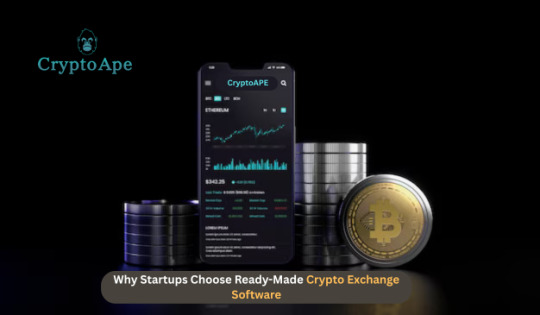
Introduction
In today’s fast-paced digital economy, launching a cryptocurrency exchange has become a lucrative opportunity. But here’s the catch—developing an exchange from scratch is time-consuming, expensive, and technically demanding. That’s where ready-made crypto exchange software comes in.
For startups with limited time, resources, or technical teams, choosing a Cryptocurrency Exchange Script offers a powerful shortcut. These pre-built solutions provide the features, security, and scalability needed to launch quickly—without reinventing the blockchain wheel.
Let’s explore why more startups are going with these ready-to-deploy scripts to power their crypto trading platforms.
What Is a Cryptocurrency Exchange Script?
A Cryptocurrency Exchange Script is a pre-developed, customizable software package that includes all the core functionalities of a crypto exchange. It helps entrepreneurs launch platforms similar to Binance, Coinbase, or Kraken—without building everything from scratch.
These scripts support key functions like:
User registration & KYC
Cryptocurrency trading engine
Wallet integration (hot and cold wallets)
Admin and user dashboards
Liquidity management
Security features (2FA, encryption, etc.)
Why Startups Are Choosing Ready-Made Solutions
1. Faster Time to Market
Launching a custom-built exchange can take months—or even years. With a Crypto Exchange Script, startups can get their platform up and running within a few weeks.
Startups love the speed because in crypto, timing is everything. Markets move fast, and being first often means gaining a competitive edge.
2. Affordable Development Costs
Developing a cryptocurrency exchange from scratch can cost anywhere between $100,000 to $500,000, depending on features and complexity. On the other hand, White Label Bitcoin Exchange Scripts offer similar functionalities at a fraction of the price.
Key cost savings include:
No need to build from scratch
No large in-house dev teams
Fewer testing phases
Reusable and battle-tested code
3. Easy Customization
Despite being pre-built, most cryptocurrency trading scripts are fully customizable. This means startups can:
Add their own branding and UI/UX
Integrate specific coins or tokens
Choose the trading pairs
Set custom transaction fees
Enable specific security layers
Customization allows businesses to tailor the user experience to match their vision and target audience.
4. Proven Security and Reliability
Security is non-negotiable in crypto. With Bitcoin Exchange Software that’s been tested across multiple use cases, startups can avoid the risks of zero-day vulnerabilities or untested code.
Most quality scripts come with:
Encrypted wallet systems
Two-factor authentication (2FA)
DDOS protection
SQL injection and XSS prevention
Secure APIs
5. Ongoing Tech Support and Upgrades
Top vendors don’t just sell a script—they offer ongoing support, updates, and patches. This is especially useful for startups without in-house blockchain engineers.
Some even offer:
Free bug fixes
Version upgrades
Technical consultation
Performance optimization tips
Popular Features in Today’s Exchange Scripts
Startups are attracted to Altcoin Exchange Scripts because they come loaded with features such as:
✅ Multi-Currency Wallets
Support for multiple cryptocurrencies, including Bitcoin, Ethereum, altcoins, and stablecoins.
✅ Advanced Trading Engine
Capable of handling real-time buy/sell orders, order matching, market, and limit trading options.
✅ KYC/AML Compliance Tools
Integrated tools for verifying user identity and following local regulatory standards.
✅ Mobile and Web Interface
Responsive front-ends for both desktop and mobile users with clean, intuitive navigation.
✅ Liquidity Management
Integrates with other exchanges or liquidity pools to ensure smooth trading and minimize slippage.
Benefits Beyond the Code
Choosing a cryptocurrency trading platform script means more than just software—it means access to an entire business ecosystem. Startups gain:
Scalability – Easily handle growing users and trading volume
Faster ROI – Quick launch means quicker monetization
Low Risk – Start small, scale fast
White-labeling – Rebrand and go live under your own name
Who Should Consider a Cryptocurrency Exchange Script?
Ready-made crypto exchange software is ideal for:
Entrepreneurs entering the crypto space with minimal technical knowledge
Startups looking to test an idea or MVP before committing large investments
Traditional financial companies expanding into digital assets
Crypto influencers or communities launching niche or token-based exchanges
How to Choose the Right Script
Not all exchange scripts are created equal. Here’s what to look for:
✔️ Clean, Modular Code
So you can update or replace components as needed.
✔️ Strong Demo & Documentation
Ensure you can test the script and understand how it works before purchase.
✔️ Regulatory Readiness
Make sure the script helps you comply with the laws of your operating country.
✔️ Customization & Integration
Check that you can easily modify features and connect third-party services.
✔️ Customer Support
Choose a provider that offers tech support during and after launch.
Real-World Use Case: A Startup Success Story
Let’s say a fintech startup in Singapore wanted to launch a niche altcoin trading platform. Instead of spending six months on development, they opted for a white label crypto exchange script. Within 45 days, they were live with:
User-friendly UI
Trading pairs for regional altcoins
24/7 trading with liquidity support
Regulatory compliance tools for KYC
Within 6 months, the platform reached 50,000+ active users—all thanks to a fast, affordable, and reliable software base.
Conclusion: Launch Smart with a Crypto Exchange Script
For startups stepping into the booming world of crypto, using a Cryptocurrency Exchange Script isn’t just a shortcut—it’s a strategic decision. It combines speed, cost-effectiveness, and flexibility, all while offering a strong technical foundation.
With reliable features, security protocols, and white-label capabilities, ready-made crypto exchange software empowers entrepreneurs to launch confidently and scale fast.
🚀 Ready to Start Your Crypto Exchange?
If you’re a startup exploring the crypto space, now is the time to act. Choose a Crypto Exchange Script that fits your needs, customize it to match your brand, and go live in weeks—not months.
Explore your options today and start building the future of finance.
FAQ Summary
What is a Cryptocurrency Exchange Script? A ready-made, customizable software for launching a crypto trading platform.
Is it secure to use a pre-built crypto exchange? Yes—if sourced from a trusted provider. Look for security features like 2FA, encryption, and DDoS protection.
Can I customize the script? Absolutely. Most scripts are white-label and highly customizable.
How much does it cost? Costs range from $5,000 to $50,000 depending on features and support options.
How long does it take to launch? With a ready-made script, your exchange can go live in as little as 2–4 weeks.
#Cryptocurrency Exchange Script#White Label Bitcoin Exchange Script#Cryptocurrency Trading Platform#Bitcoin Exchange Software#Altcoin Exchange Script#Crypto Exchange Script
0 notes
Text
Selecting the Perfect Multi Vendor Marketplace Script: An In-Depth Guide

In the bustling world of e-commerce, multi-vendor marketplaces have emerged as a powerful way to connect buyers and sellers, offering a wide array of products under one virtual roof. But with numerous marketplace script options available, how do you make the right choice? 🛍️💻
🔍 Research Is Key: Start by understanding your business needs. Consider factors like scalability, customization, payment gateways, and ease of use.
💡 Feature Flexibility: A robust script should offer a range of features, from vendor management and product cataloguing to secure payment gateways and review systems.
⚙️ Customization Possibilities: Your marketplace should align with your brand identity. Look for a script that offers customization options without excessive complexity.
🌐 Scalability Matters: As your marketplace grows, so will its demands. Ensure the script can handle increasing traffic, vendors, and products.
💰 Monetization Options: Different scripts offer various monetization models, such as subscription fees, commission-based earnings, or listing charges. Choose what suits your business model.
🛡️ Security and Support: Prioritize scripts with robust security features to protect both buyers and sellers. Additionally, responsive customer support is essential in case of technical issues.
📱 Mobile Responsiveness: With the rise in mobile shopping, your marketplace should be optimized for various devices, providing a seamless experience.
📊 Analytics and Insights: Access to data-driven insights can help refine your marketplace strategy. Opt for a script that provides analytics tools.
🛒 Easy Vendor Management: A user-friendly vendor dashboard is crucial. Vendors should be able to manage their products, orders, and communication effortlessly.
👥 Community Building: Social interactions can enhance your marketplace's appeal. Seek a script that supports communication between buyers, sellers, and even customers.
🔗 Third-Party Integrations: Consider scripts that allow integration with other tools and services, such as marketing, analytics, or shipping solutions.
🚀 Conclusion:
Choosing the right multi-vendor marketplace script requires careful consideration of your business needs, customization options, scalability, security, and more. A well-chosen script can pave the way for a successful online marketplace venture.
After a thorough evaluation of the factors mentioned above, we recommend considering our Multi Vendor Marketplace Script. With a track record of empowering numerous successful marketplaces, our script offers scalability, customization, robust vendor management, security, and ongoing support. Take your online marketplace venture to new heights with our reliable and feature-rich solution.
Remember, the script you choose will impact your platform's functionality, user experience, and growth potential. Choose wisely and embark on a journey of digital commerce success.
0 notes
Text
Autonomous Workflows: The Power of AI Agents in Automating Complex Business Processes

The promise of automation in business has long captivated enterprises seeking greater efficiency and reduced costs. For years, Robotic Process Automation (RPA) and custom scripting have delivered significant gains by automating repetitive, rule-based tasks. However, as organizations strive for true digital transformation, they encounter a formidable barrier: the sheer complexity, dynamism, and unstructured nature of most real-world business processes.
Traditional automation often falters when faced with:
Unstructured data (e.g., free-form emails, scanned documents).
Nuanced decision-making that requires reasoning.
Handling unexpected exceptions or deviations from predefined rules.
Adapting to changing circumstances without manual re-configuration.
This is precisely where AI Agents emerge as a game-changer, ushering in the era of autonomous workflows capable of automating highly complex, end-to-end business processes with unprecedented intelligence and adaptability.
Beyond Basic Automation: Why AI Agents are the Next Frontier
Traditional automation tools are excellent at following explicit instructions. Think of them as highly efficient digital clerks who can execute tasks perfectly, as long as every step is rigidly defined. But what happens when the "clerk" needs to think, learn, decide, or adapt?
This is the fundamental shift AI Agents bring: they are designed not just to execute, but to reason, plan, act, and self-correct to achieve a defined goal. Leveraging the power of Large Language Models (LLMs) as their "brain," combined with access to external tools and memory, AI agents can:
Understand Context: Interpret natural language instructions and complex scenarios.
Generate Plans: Break down high-level goals into a series of actionable steps.
Utilize Tools: Interact with various digital systems (APIs, databases, web applications, CRMs, ERPs, emails).
Learn and Adapt: Refine their strategies based on outcomes and new information.
Handle Exceptions: Proactively identify and address deviations, even escalating to humans when necessary.
This capability to dynamically orchestrate multi-step processes is why they are perfect for truly autonomous workflows.
How Autonomous Workflows with AI Agents Work: The Ecosystem
An autonomous workflow powered by AI agents isn't a single monolithic entity, but rather a sophisticated ecosystem where intelligent components collaborate:
The Orchestrator Agent (The Brain): This is typically an advanced LLM that receives the high-level business goal (e.g., "Onboard a new vendor," "Resolve a customer complaint"). It then:
Decomposes the goal into smaller, manageable sub-tasks (the "multi-hop" aspect).
Plans the optimal sequence of actions, often iteratively.
Delegates tasks to specialized sub-agents or invokes external tools.
Monitors progress and evaluates outcomes.
Specialized Sub-Agents (The Experts): For very complex or domain-specific tasks, the orchestrator might delegate to other, more focused AI agents (e.g., a "Finance Agent" for reconciliation, a "Legal Agent" for contract review, a "Customer Service Agent" for query resolution). These sub-agents have deep knowledge and specific tools for their domain.
The Tooling Layer (The Hands): This is the crucial interface that allows AI agents to interact with the digital world. It includes:
APIs for SaaS applications (Salesforce, SAP, ServiceNow).
Database connectors (SQL, NoSQL).
Web scrapers for information gathering.
Email and communication integrations.
Code interpreters for complex calculations or data transformations.
Memory & Context Management (The Learning): Agents maintain both short-term memory (for the current task's context) and long-term memory (for learning from past experiences and retaining relevant institutional knowledge). This continuous learning allows them to improve their performance over time.
Human-in-the-Loop (The Oversight): While autonomous, these workflows are not entirely unsupervised. They are designed to escalate complex, ambiguous, or high-risk situations to human operators for review, approval, or intervention. This ensures safety and maintains crucial human oversight.
Transformative Use Cases for Autonomous Workflows in Businesses
The potential for AI agents to revolutionize business processes is immense, particularly in areas characterized by high complexity, significant manual effort, and critical decision points:
End-to-End Customer Onboarding & Service: An agent can guide new customers through sign-up, verify documents, update CRM, provision services, send personalized welcome emails, and even proactively resolve issues – all autonomously.
Complex Supply Chain Optimization: Monitoring global logistics, weather patterns, news, and supplier performance in real-time. An agent can proactively identify potential disruptions, recommend alternative routes, or even automatically reorder supplies based on predictive analytics.
Financial Operations & Reconciliation: Automating invoice processing, validating data across disparate systems, reconciling discrepancies, flagging suspicious transactions for fraud detection, and generating comprehensive financial reports.
Automated Incident Response (IT/Security): Detecting security breaches, analyzing logs from various systems, automatically isolating affected network segments, initiating data recovery, and escalating only novel or severe threats to human experts.
HR & Talent Management: From automatically screening resumes and scheduling multi-stage interviews across different calendars to personalizing onboarding flows and generating compliance reports.
Legal Document Review & Compliance: Agents can review vast volumes of contracts, identify key clauses, flag risks, check for regulatory compliance (e.g., GDPR, HIPAA), and even draft initial responses, drastically reducing manual legal work.
Personalized Marketing Campaign Orchestration: Dynamically designing, launching, and optimizing multi-channel marketing campaigns based on real-time customer behavior, market trends, and competitor analysis, with automated content generation and A/B testing.
Navigating the Road Ahead: Challenges and Considerations
While the promise is exhilarating, implementing autonomous workflows with AI agents comes with its own set of challenges:
Technical Complexity: Designing and orchestrating these multi-agent systems requires significant AI engineering and MLOps expertise.
Reliability & Hallucinations: Ensuring agents reliably execute tasks and don't "hallucinate" (generate incorrect but plausible information) is crucial, requiring robust validation and monitoring.
Security & Governance: Granting AI agents access to sensitive data and critical systems necessitates stringent security protocols, access controls, and clear governance frameworks.
Ethical AI & Bias: Mitigating inherent biases in training data and ensuring the agents make fair, transparent, and ethical decisions, especially in high-stakes scenarios.
Integration with Legacy Systems: Many enterprises still rely on older, complex IT infrastructure, making seamless integration a significant hurdle.
Cost & Compute: Running complex, iterative agentic workflows can be computationally intensive and costly, requiring careful resource management.
Change Management & Trust: Employees may resist automation due to fear of job displacement or a lack of trust in autonomous systems. Clear communication and demonstrating value are key.
The Future is Autonomous
Autonomous workflows driven by AI Agents are not just an incremental improvement over traditional automation; they represent a fundamental paradigm shift. They are transforming what's possible, moving businesses from automating simple tasks to orchestrating complex, intelligent processes that were once exclusively the domain of human teams.
As frameworks and platforms continue to mature, providing better tools for building, deploying, and managing these agents, we are poised to unlock unprecedented levels of efficiency, innovation, and strategic advantage. For organizations ready to embrace this next wave of AI, the future of work promises to be truly autonomous, intelligent, and transformative.
0 notes
Text
Next Gen Quality: Exploring Advanced Mobile App Testing Services

In an era where our smartphones have become indispensable—from banking and healthcare to remote work and entertainment—the mobile app ecosystem is evolving at an unprecedented pace. Users expect fast, fluid, secure, and glitch-free experiences. One negative review or one install failure can make or break reputation. That’s why forward-thinking teams at Robotico Digital are turning to next-generation Mobile App Testing Services, blending artificial intelligence, intelligent automation, and real-world simulation. These are not just QA services; they are strategic enablers of trust and growth.
This blog delves into the technical mechanics behind these advanced services and outlines how they are shaping the future of app quality in agile, high-velocity development environments.
Why Traditional Testing Can't Keep Up
Till recently, mobile testing revolved around manually running test scripts or using basic emulators. While these helped catch obvious bugs and functional failures, they increasingly fall short in today’s fast-evolving software landscape. Legacy test scripts are brittle — UI changes break locators, device fragmentation goes poorly covered, and maintenance overheads balloon. In parallel, issues like battery drain, privacy violations, poor performance under real world conditions, and accessibility gaps go undetected.
More concerning is that traditional QA focuses purely on pass/fail criteria, often missing slow interactions, UI shifts, and regression patterns affecting actual users. In contrast, next-gen Mobile App Testing Services introduce resilience, intelligence, scalability, and a deeply holistic coverage model suited for modern architectures.
Core Components of Advanced Mobile App Testing Services
1. Real Device Cloud Testing
True production parity demands testing on real handsets across vendors, OS versions, network conditions, screen densities, battery states, and coverage zones. Here's how we implement it:
l Wild card devices: Real devices from Android, iOS, foldables, rugged devices, and tablets.
l Geolocation variation: Tests executed in different network geographies to check localization, latency, and content delivery.
l Sensors & OS-specific APIs: Verifying sensor calibration, camera behavior, Bluetooth, NFC, and file storage interactions across platforms.
l Hands-free automation: Remote robotic arms interacting with UI, simulating swipes, taps, multi-finger gestures for immersive coverage.
These steps eliminate guesswork and ensure polished UI, smooth functionality, and resilience across diverse conditions.
2. AI-Powered Test Case Generation & Maintenance
A pivotal challenge of test automation is fragile scripts that fail once UI or code changes. Enter AI-driven frameworks that:
l Analyze previous test runs and error logs, predicting new test candidates.
l Generate customizable test scenarios in natural language—for example, “Validate login with valid credentials,” then translate it into executable scripts.
l Implement self-healing locators, using fallback mechanisms like visual detection, context-based matching, and pattern recognition.
l Discover orphan flows, new UI paths and views that require validation—even without explicit test scripts.
This turns testing from "write, break, update" to "deploy, adapt, validate"—massively reducing maintenance cycles for Mobile App Testing Services.
3. Simulating Real-World Performance & Network Conditions
Performance issues are often hidden until post-launch. To pre-empt these, next-gen QA includes:
l Battery impact simulation: Measuring resource usage over multiple app sessions with real user behaviors.
l Network toggling: Testing app resilience when switching between LTE, 3G, 2G, and WiFi, including captive portals and network flaps.
l Concurrent load testing: Coordinated installations, updates, and migrations alongside real user data.
l Backgrounding, OS throttling, and low memory: Ensuring session data is preserved, resumes work, and notifications function appropriately.
This makes Mobile App Testing Services truly reflective of live conditions, preventing in-field failures and user complaints.
4. Security & Privacy-Driven Penetration Testing
With apps handling sensitive information, security is non-negotiable. Our advanced testing services include:
l Static and dynamic analysis: Detecting insecure code, debugging weaknesses, encryption red flags.
l OWASP Mobile Top 10 compliance: Testing for injection, broken authentication, data leakage, and API vulnerabilities.
l Network traffic interception checks: Verifying SSL pinning, TLS implementations, non-leakage of credentials and session cookies.
l Secure storage audits: Ensuring secure local encryption for caches, wallets, credentials.
l Reverse engineering checks: Applying tamper detection, anti-repackaging, rooted device checks.
These practices protect your brand and users alike, without compromise.
5. Accessibility, Localization & Usability
High-quality apps should also be usable for everyone. We ensure inclusivity through:
Screen-reader compatibility: Inspecting voice prompts, interactive elements, and focus order.
Color contrast & font scaling checks, accommodating visual impairments.
Multi-language & right-to-left text validation in RTL languages, including font rendering and truncation.
Usability audits with real users—testing placement, readability, culture-appropriate UI flows.
These benchmarks are essential to delivering apps that connect deeply with diverse audiences and markets.
6. AI-Based Crash, Analytics, and Behavior Prediction
Predicting failure is more valuable than detecting it. Our next-gen services around the app lifecycle include:
l Crash log intelligence: Aggregating crash stacks, auto-classifying root causes, and generating test triggers.
l User behavior analytics: Identifying session patterns, bottlenecks, and mismatch between anticipated vs real usage.
l Predictive bug scoring: Estimating routes with the highest failure risk or financial impact.
l Real-time QA dashboards: Visualizing risk-prioritized test results linking device health, user flow, and technical debt.
This turns Mobile App Testing Services into a continuous risk mitigation framework—one that learns over time and adapts to real-world usage.
Embedding Advanced QA into Your CI/CD Pipeline
For quality to be continuous rather than an afterthought, it must be woven into every stage of development. We integrate these advanced services like so:
l Code commit triggers QA jobs: Unit tests → UI smoke tests → cloud device compatibility checks.
l Feature merge initiates full suite: Regression on emulators, AI-powered script execution on real devices, network/performance checks.
l Pre-release gates: Security checks, crash predictive analysis, accessibility compliance.
l Canary release monitoring: Real user telemetry flows back into QA insights, ready to refine next cycles.
The result? Quality becomes baked into the process—not a bottleneck.
Real-World Impact: Enterprise FinTech Case Study
Client Profile
A fast-growing fintech startup faced crash complaints, poor app ratings, and OTA performance issues.
Challenges
l Crash rates north of 7%
l Battery drain complaints after updates
l Poor ratings in specific Android OEM devices
Robotico Digital Solution
l Cloud-device coverage with AI-generated flows
l Battery and network throttle stress-testing
l OWASP-level security and data encryption audits
l Real crash log intelligence feeding bug remedy triggers
Outcomes
l Crash rate dropped to under 1%
l Battery efficiency improved ~40%
l Play Store rating improved from 3.4 to 4.6
l Time-to-market accelerated by 30%
This real example highlights the transformative impact of next-gen Mobile App Testing Services when combined with intelligence and resilience.
Best Practices to Adopt Today
To elevate your own mobile QA program:
l Initiate testing early—start with pain points before UI is finalized.
l Mix emulators and physical devices—they provide complementary insights.
l Vet AI-generated tests—human supervision keeps quality high.
l Track logs from crash analytics—proactive bug detection is efficient.
l Embrace progressive automation—start small, grow AI intensity over time.
These steps mature your QA from reactive to predictive, and from periodic to continuous.
Future Horizons in Mobile App QA
Expect these leaps soon:
l Generative-AI testing: “Test path for email attachment upload flow” converts to scripts instantly.
l Visual AI UX scoring: Human-like analysis to assess flow intuitiveness.
l Device sandboxes on demand: Each test runs in an isolated, repeatable environment.
l Model-based test synthesis: Architecture-aware test generation—no scripts needed.
l Smart partnership with DevSecOps: QA moves more left into release planning, design, and maintenance.
These trends will bridge the gap between fast shipping and user delight.
Conclusion: The Time to Shift is Now
If you aim to make your mobile app the cornerstone of your brand’s digital presence, relying on scripts and manual testing won’t cut it anymore. Instead, embrace the new era of Mobile App Testing Services that are adaptive, intelligent, and deeply automated. At Robotico Digital, we’re empowering brands with these capabilities, elevating QA from task to strategy.
Whether you're preparing for a scale-up, entering new markets, or combating performance issues, advanced mobile testing ensures you deliver reliability and excellence—every time.
0 notes
Text
Top Features Every MakeMyTrip Clone Must Include in 2025
In the fast-moving world of online travel booking, success depends on how well your platform meets users’ expectations. Travelers want speed, simplicity, and flexibility—and if you can’t deliver, they’ll jump to a competitor. That’s why having the right features in your MakeMyTrip-like travel app is crucial in 2025.
Let’s explore the key features your platform should include—and why each one matters.
1. Multi-Service Booking Engine
Travelers today want more than just flight tickets. They want to book everything—hotels, cabs, trains, buses, experiences—all from one place. A MakeMyTrip clone should offer a seamless booking engine that supports multiple services in one flow, giving users the all-in-one experience they crave.
2. Real-Time Availability and Updates
Booking a room or a flight that turns out to be unavailable is a major red flag. Your platform needs real-time syncing with vendor inventories and APIs. Live updates on prices, seat availability, and itinerary changes build trust and keep your users coming back.
3. Mobile-First, Fast-Loading Design
Most travel bookings now happen on mobile devices. Your clone app must be optimized for smartphones with intuitive navigation, minimal loading times, and a smooth booking flow. UX is king in 2025, and if it’s not frictionless, it’s not going to work.
4. AI-Powered Recommendations
Artificial Intelligence isn’t a luxury anymore—it’s an expectation. Smart suggestions based on user behavior, past trips, and preferences can drive more bookings. Suggest hotels near their last destination or offer deals on recurring routes to create a personalized travel assistant feel.
5. Multi-Language and Multi-Currency Support
Going global? Your app should speak your audience’s language and transact in their currency. This isn’t just about user convenience—it’s about conversion. Localized content increases user trust and helps reduce bounce rates dramatically.
6. Secure and Flexible Payment Gateway
Security and variety are must-haves. Integrate trusted gateways and offer multiple options: credit/debit cards, UPI, net banking, wallets, and even crypto in emerging markets. Transparent refund policies and payment confirmations are non-negotiables.
7. Customizable Travel Packages
Give users the ability to create or choose from travel packages. Bundling flights, hotels, and local tours not only increases revenue but also enhances customer satisfaction. Packages can be seasonal, destination-based, or even user-generated.
8. Review and Rating System
User-generated reviews boost credibility. Your clone app should support ratings for hotels, flights, guides, and overall experiences. Verified reviews help users make confident choices and establish long-term trust in your platform.
9. Admin and Vendor Dashboards
Your platform should empower both you and your vendors. A powerful admin panel lets you manage users, bookings, revenue, support tickets, and analytics. A vendor dashboard lets hotels, agents, or cab providers manage listings, prices, and availability independently.
10. Scalable Architecture
Don’t launch with short-term tech. Ensure your MakeMyTrip clone is scalable to handle spikes in traffic, future upgrades, and third-party integrations. You don’t want to rebuild when your app starts getting thousands of bookings daily.
Want a clone script that already comes with all these features and more? Miracuves’ MakeMyTrip Clone is built for entrepreneurs who want speed, customization, and performance all in one package.
0 notes
Text
The Benefits of Working with a PHP Development Company in India

According to online sources, 75% of all websites worldwide use PHP. PHP is a popular server-side scripting language known for its flexibility and ease of use. Due to its robust capabilities, many major websites, such as Facebook and WordPress, are built using PHP.
In today’s digitally driven world, businesses of all sizes are in constant pursuit of scalable, efficient, and cost-effective web solutions. PHP remains one of the most trusted server-side scripting languages for dynamic website and web application development. If you’re looking to hire PHP developers, India is one of the top destinations. From affordability to technical excellence, working with a PHP development company in India offers a range of business benefits.
Why Choose PHP for Web Development?
Before diving into the advantages of outsourcing, it’s important to understand why PHP continues to dominate:
Open-source and free to use
Platform-independent
Strong community support
Compatible with major databases
Frameworks like Laravel, CodeIgniter, Symfony, and more
This makes PHP a smart choice for everything from simple websites to complex enterprise-level applications. PHP’s flexibility allows for seamless integration with various databases and the ability to scale projects as needed. Additionally, its extensive library of frameworks streamlines the development process and ensures high-quality results.
1. Cost-Effective Solutions
Hiring developers in Western countries can significantly strain your IT budget. In contrast, when you hire PHP developers from India, you gain access to highly skilled professionals at a fraction of the cost. PHP development companies in India offer flexible pricing models hourly, full-time, or project-based allowing you to control and optimize your development costs.
2. Access to Skilled Talent Pool
India is home to one of the largest IT talent pools in the world. Most PHP developers are not just technically sound but also experienced in handling global clients across different industries. Whether you’re building an eCommerce platform or a custom CMS, PHP development companies in India can match you with developers experienced in your niche.
3. Time Zone Advantage & Faster Turnaround
Outsourcing to India gives businesses in the US, UK, and Australia the advantage of round-the-clock development. The time zone difference ensures that work progresses even after your local office hours, resulting in faster project delivery. With the right partner, your product gets to market quicker than ever.
4. Quality & Communication
Gone are the days when outsourcing meant compromising on quality. Modern PHP developers in India are proficient in English and trained in agile methodologies, version control (Git), and DevOps tools. Leading PHP development companies in India follow international quality standards, ensuring smooth communication and bug-free development.
5. Scalable & Flexible Teams
Need to scale your team during peak development periods? No problem. You can hire PHP developers in India on demand, without worrying about long-term hiring commitments. This gives your business the flexibility to adapt as project requirements evolve.
6. Comprehensive PHP Services
A reputable PHP development company in India offers end-to-end services, including:
Custom PHP development
API integrations
CMS & eCommerce development
Maintenance and support
PHP migration and upgrades
This one-stop approach eliminates the need to coordinate between multiple vendors. Their experienced team of developers can handle all aspects of PHP development, ensuring a seamless and efficient process for clients. By choosing a reputable company in India, businesses can save time and resources while receiving high-quality PHP solutions.
How to Hire a PHP Developer in India?
When looking to hire PHP developer or a team, consider the following:
Portfolio and Case Studies: Review their past work to assess their expertise and experience in projects similar to yours.
Client Testimonials: Feedback from previous clients can provide valuable insights into their reliability and service quality.
Communication Channels: Ensure they have clear communication processes and are responsive to your queries.
Technical Skills & Expertise: Verify their proficiency in the specific PHP frameworks and technologies relevant to your project.
Pricing Structure: Understand their pricing model and ensure it aligns with your budget.
Final Thoughts
When you hire PHP developers in India, you’re not just saving money—you’re investing in technical expertise, reliability, and scalability. Whether you’re a startup or a large enterprise, collaborating with a PHP development company in India can drive your web development goals more efficiently.
Ready to Hire PHP Developers from India?
Looking for a trusted partner for your next web project? Consider partnering with a top-tier PHP development company in India to unlock cost savings, speed, and innovation.
Frequently Asked Questions (FAQs)
Q1. Why should I hire PHP developers from India?
Ans : India offers a vast pool of experienced PHP developers at cost-effective rates, with a strong reputation for delivering high-quality code.
Q2. How do I choose the right PHP development company in India?
Ans : Look for companies with proven experience, client testimonials, a strong portfolio, and transparent communication practices.
Q3. Can I hire PHP developers in India for short-term projects?
Ans : Yes, many companies offer flexible hiring models, including short-term or hourly engagement options.
Q4. Is communication a barrier while working with Indian developers?
Ans: Most Indian developers are fluent in English and use tools like Slack, Zoom, and Jira to ensure clear, real-time communication.
Q5. What technologies do Indian PHP developers specialize in?
Ans : They are skilled in core PHP and popular frameworks like Laravel, CodeIgniter, Symfony, and CakePHP, among others.
0 notes
Text
Beyond the Pipeline: Choosing the Right Data Engineering Service Providers for Long-Term Scalability
Introduction: Why Choosing the Right Data Engineering Service Provider is More Critical Than Ever
In an age where data is more valuable than oil, simply having pipelines isn’t enough. You need refineries, infrastructure, governance, and agility. Choosing the right data engineering service providers can make or break your enterprise’s ability to extract meaningful insights from data at scale. In fact, Gartner predicts that by 2025, 80% of data initiatives will fail due to poor data engineering practices or provider mismatches.
If you're already familiar with the basics of data engineering, this article dives deeper into why selecting the right partner isn't just a technical decision—it’s a strategic one. With rising data volumes, regulatory changes like GDPR and CCPA, and cloud-native transformations, companies can no longer afford to treat data engineering service providers as simple vendors. They are strategic enablers of business agility and innovation.
In this post, we’ll explore how to identify the most capable data engineering service providers, what advanced value propositions you should expect from them, and how to build a long-term partnership that adapts with your business.
Section 1: The Evolving Role of Data Engineering Service Providers in 2025 and Beyond
What you needed from a provider in 2020 is outdated today. The landscape has changed:
📌 Real-time data pipelines are replacing batch processes
📌 Cloud-native architectures like Snowflake, Databricks, and Redshift are dominating
📌 Machine learning and AI integration are table stakes
📌 Regulatory compliance and data governance have become core priorities
Modern data engineering service providers are not just builders—they are data architects, compliance consultants, and even AI strategists. You should look for:
📌 End-to-end capabilities: From ingestion to analytics
📌 Expertise in multi-cloud and hybrid data ecosystems
📌 Proficiency with data mesh, lakehouse, and decentralized architectures
📌 Support for DataOps, MLOps, and automation pipelines
Real-world example: A Fortune 500 retailer moved from Hadoop-based systems to a cloud-native lakehouse model with the help of a modern provider, reducing their ETL costs by 40% and speeding up analytics delivery by 60%.
Section 2: What to Look for When Vetting Data Engineering Service Providers
Before you even begin consultations, define your objectives. Are you aiming for cost efficiency, performance, real-time analytics, compliance, or all of the above?
Here’s a checklist when evaluating providers:
📌 Do they offer strategic consulting or just hands-on coding?
📌 Can they support data scaling as your organization grows?
📌 Do they have domain expertise (e.g., healthcare, finance, retail)?
📌 How do they approach data governance and privacy?
📌 What automation tools and accelerators do they provide?
📌 Can they deliver under tight deadlines without compromising quality?
Quote to consider: "We don't just need engineers. We need architects who think two years ahead." – Head of Data, FinTech company
Avoid the mistake of over-indexing on cost or credentials alone. A cheaper provider might lack scalability planning, leading to massive rework costs later.
Section 3: Red Flags That Signal Poor Fit with Data Engineering Service Providers
Not all providers are created equal. Some red flags include:
📌 One-size-fits-all data pipeline solutions
📌 Poor documentation and handover practices
📌 Lack of DevOps/DataOps maturity
📌 No visibility into data lineage or quality monitoring
📌 Heavy reliance on legacy tools
A real scenario: A manufacturing firm spent over $500k on a provider that delivered rigid ETL scripts. When the data source changed, the whole system collapsed.
Avoid this by asking your provider to walk you through previous projects, particularly how they handled pivots, scaling, and changing data regulations.
Section 4: Building a Long-Term Partnership with Data Engineering Service Providers
Think beyond the first project. Great data engineering service providers work iteratively and evolve with your business.
Steps to build strong relationships:
📌 Start with a proof-of-concept that solves a real pain point
📌 Use agile methodologies for faster, collaborative execution
📌 Schedule quarterly strategic reviews—not just performance updates
📌 Establish shared KPIs tied to business outcomes, not just delivery milestones
📌 Encourage co-innovation and sandbox testing for new data products
Real-world story: A healthcare analytics company co-developed an internal patient insights platform with their provider, eventually spinning it into a commercial SaaS product.
Section 5: Trends and Technologies the Best Data Engineering Service Providers Are Already Embracing
Stay ahead by partnering with forward-looking providers who are ahead of the curve:
📌 Data contracts and schema enforcement in streaming pipelines
📌 Use of low-code/no-code orchestration (e.g., Apache Airflow, Prefect)
📌 Serverless data engineering with tools like AWS Glue, Azure Data Factory
📌 Graph analytics and complex entity resolution
📌 Synthetic data generation for model training under privacy laws
Case in point: A financial institution cut model training costs by 30% by using synthetic data generated by its engineering provider, enabling robust yet compliant ML workflows.
Conclusion: Making the Right Choice for Long-Term Data Success
The right data engineering service providers are not just technical executioners—they’re transformation partners. They enable scalable analytics, data democratization, and even new business models.
To recap:
📌 Define goals and pain points clearly
📌 Vet for strategy, scalability, and domain expertise
📌 Watch out for rigidity, legacy tools, and shallow implementations
📌 Build agile, iterative relationships
📌 Choose providers embracing the future
Your next provider shouldn’t just deliver pipelines—they should future-proof your data ecosystem. Take a step back, ask the right questions, and choose wisely. The next few quarters of your business could depend on it.
#DataEngineering#DataEngineeringServices#DataStrategy#BigDataSolutions#ModernDataStack#CloudDataEngineering#DataPipeline#MLOps#DataOps#DataGovernance#DigitalTransformation#TechConsulting#EnterpriseData#AIandAnalytics#InnovationStrategy#FutureOfData#SmartDataDecisions#ScaleWithData#AnalyticsLeadership#DataDrivenInnovation
0 notes
Text
How will you boom organic site visitors to your Shopify save? (4 search engine optimization factors)
increasing the number of folks who go to your Shopify store barring counting on paid ads is crucial for reinforcing your on line presence and income. here are four powerful strategies for improving your Shopify keep's search engine optimization to draw more organic traffic. Grow smarter and sell faster with the help of shopify expert developer.
A success key-word studies:
engaging in thorough key-word research is quintessential for a successful seo strategy. apprehend what capability customers are looking for and contain the ones high-site visitors keywords into your product descriptions, weblog posts, and meta tags. Use equipment to discover applicable key phrases, ensuring they seamlessly mixture into your content material to improve your keep's search engine rankings.
High-quality On-web page seo:
On-page seo entails optimizing elements inside your Shopify save to assist search engines understand your content material better. This includes optimizing title tags, meta descriptions, and photos. Create complete and persuasive product descriptions that spotlight the blessings and functions to interact customers efficiently.
Technical search engine optimization and placement velocity:
engines like google decide on web sites that load fast and provide a remarkable user revel in. Optimize your Shopify save's speed by using compressing photographs, making use of browser caching, and minimizing the usage of heavy scripts. enforce technical seo by developing a clean and logical web page structure, making it less complicated for search engines like google and yahoo to move slowly your web page effectively.
Content creation and inbound link constructing
expand incredible content consisting of how-to courses, tutorials, and blog posts. This no longer solely informs and engages your clients but additionally draws one-way links from different web sites. oneway links act as endorsements to search engines like google and yahoo, probably main to higher rankings and expanded natural traffic to your Shopify shop. Expert hire shopify experts tailored to boost your brand and sales.
by means of continuously enforcing those techniques, you may extensively improve the organic visitors to your Shopify save, resulting in more visibility and probably higher income. maintain in mind that search engine optimization requires ongoing interest and updates to align with the brand new nice practices and seek engine algorithms.
in the Shopify marketplace, Codify Infotech is the Shopify expert who diagram brilliant eCommerce stores with search engine optimization friendly, so your shop will enhance natural site visitors.
Also Read : What’s the proper photo size in Shopify – find out Now
Why Shopify is right for your Multi-vendor marketplace
#hire shopify experts#best wordpress development company in india#shopify developers for hire#white label shopify developers#hire shopify expert#shopify experts india
0 notes